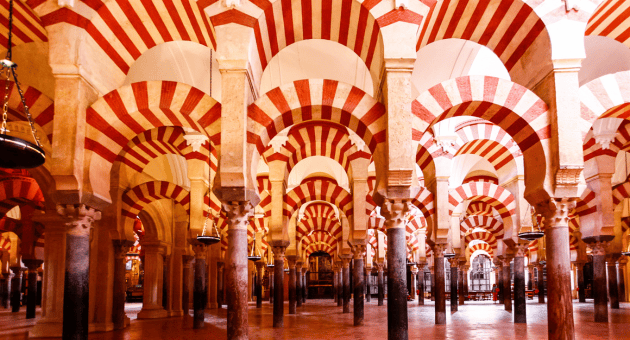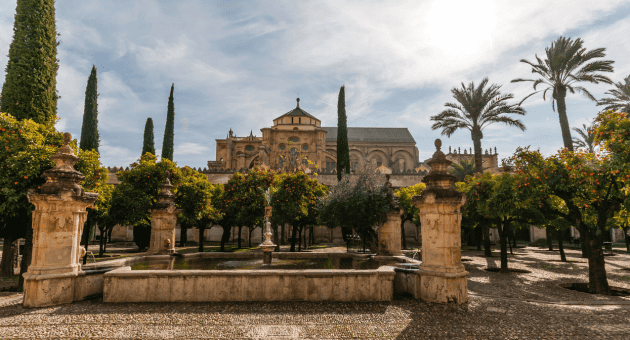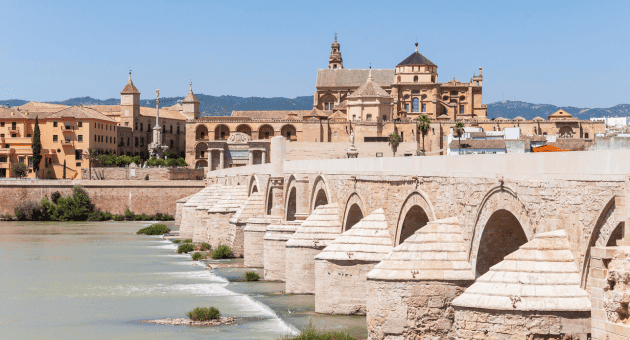The Great Mosque of Cordoba is one of the most iconic structures of Islamic architecture. Located in the southern region of Andalusia, Spain, it is a testament to the rich history and cultural heritage of this area. This article explores the origins and history of the Great Mosque, its architectural features, the influence of Islamic art and architecture, and its present-day significance as a UNESCO World Heritage Site.
The Origins and History of the Great Mosque of Cordoba

The Umayyad Dynasty and the Mosque’s Foundation
The Great Mosque of Cordoba was built during the reign of the Umayyad Dynasty, which lasted from 661 to 750 AD. This dynasty was credited with the establishment of many Islamic structures, including mosques and palaces, which were considered an important part of Islamic culture and tradition. The Great Mosque was built in 785 AD by Abd al-Rahman I, who was the first Umayyad Emir of Cordoba. He initiated the construction of this mosque on the site of an existing Visigothic church.
Expansion and Transformation Over Time
Over the centuries, the Great Mosque of Cordoba underwent several expansions, renovations, and modifications. During the reign of Abd al-Rahman II, the mosque was expanded significantly, with the addition of new sections, including the ‘Hypostyle Hall,’ which is one of the most notable features of the mosque. The mosque was further expanded and renovated during the reigns of Alvaro III and Al-Hakam II, who were known for their patronage of the arts.
The mosque underwent major transformations following the Reconquista, or the Christian conquest of the city in the 13th century. In 1236, Cordoba was conquered by King Ferdinand III of Castile, who converted the mosque into a cathedral. The transformation of the mosque to a cathedral was accompanied by several alterations, including the demolition of certain parts of the mosque and the addition of new structural elements, such as the choir and the large nave.
Architectural Features and Design Elements

The Hypostyle Hall and Prayer Space
The Hypostyle Hall is the most striking feature of the Great Mosque of Cordoba. It covers an area of about 24,000 square feet and consists of over 800 columns arranged in a grid-like pattern, supporting horseshoe-shaped arches. The prayer space is located in the centre of the hall, which is divided into five aisles by rows of columns. The ‘Mihrab,’ which is the niche in the wall of the mosque that indicates the direction of prayer, is located at the centre of the Qibla wall, which is the wall that faces Mecca.
The Courtyard of the Orange Trees
The Courtyard of the Orange Trees is located on the north side of the mosque. It is enclosed by a wall and consists of a rectangular pool and rows of orange trees, which give it its name. This courtyard was added during the reign of Al-Mansur, who also commissioned the construction of the Great Hall and the Bell Tower.
The Bell Tower and Minaret
The Bell Tower, also known as the Giralda, is located on the northwest corner of the mosque. It was added after the Reconquista and was designed in the Gothic style. The minaret, which was a part of the original mosque design, was converted into the Bell Tower during the restructuring of the mosque.
The Influence of Islamic Art and Architecture of Great Mosque of Cordoba

The Use of Calligraphy and Geometric Patterns
The Great Mosque of Cordoba is known for its intricate use of calligraphy and geometric patterns in its design. The use of calligraphy was an important part of Islamic art and was used to convey spiritual messages. The geometric patterns reflect the order and harmony of the Islamic universe and are often used to decorate Islamic architecture.
The Integration of Natural Elements
The integration of natural elements, such as water and vegetation, is also an important feature of Islamic architecture. The Courtyard of the Orange Trees, with its rectangular pool and rows of trees, is a prime example of this. The use of water features, such as fountains and pools, in Islamic architecture is considered a symbol of life and purity.
The Legacy of the Great Mosque in Islamic Architecture
The Great Mosque of Cordoba has had a lasting impact on Islamic architecture. Its use of calligraphy, geometric patterns, and natural elements has been replicated in many Islamic structures throughout the world. The mosque is considered a masterpiece of Islamic architecture and serves as an inspiration to architects and artists alike.
The Great Mosque of Cordoba Today

Preservation and Restoration Efforts
The Great Mosque of Cordoba has gone through extensive preservation and restoration efforts over the years. In the 20th century, the Spanish government undertook a major restoration project to restore the mosque-cathedral to its original Islamic architectural form. This effort involved the removal of additions made during the Christian period and the restoration of the Hypostyle Hall. The mosque-cathedral was officially opened to the public in 1984.
The Mosque-Cathedral is a UNESCO World Heritage Site
The Great Mosque of Cordoba, or the mosque-cathedral as it is known today, was designated as a UNESCO World Heritage Site in 1984. It is recognized as a unique example of the fusion of Islamic and Christian cultures. The mosque-cathedral serves as a major tourist attraction and is considered a symbol of cultural diversity and coexistence.
Visiting the Great Mosque of Cordoba: Tips and Recommendations
If you are planning a visit to the Great Mosque of Cordoba, there are a few things to keep in mind. It is recommended that you purchase your tickets in advance, as the mosque-cathedral can get crowded, especially during peak tourist season. You should also dress modestly and respectfully, as the mosque-cathedral is still an active place of worship. It is recommended that you visit the mosque-cathedral early in the morning or late in the afternoon to avoid crowds.
Conclusion
The Great Mosque of Cordoba is a true masterpiece of Islamic architecture. Its intricate design, use of calligraphy and geometric patterns, and integration of natural elements make it a testament to the rich history and cultural legacy of the Andalusian region of Spain. Its position as a UNESCO World Heritage Site and major tourist attraction is a testament to its continued relevance and importance to the world of Islamic art and architecture.


